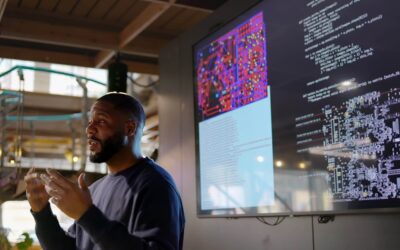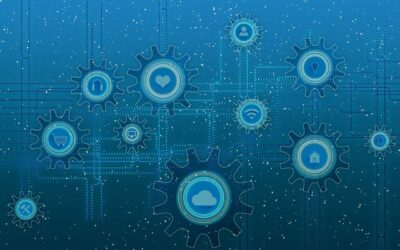By implementing smart edge technologies, combined with high-speed private networking and cloud-first enterprise applications, large manufacturing companies – even those who have factories located around the world – can now benefit from “remote control” and visibility into how machines and people are working in harmony to increase yield, improve safety, and manage supply chains more efficiently.
With the latest IoT and Industrial IoT frameworks, industrial companies can capture data from automation lines directly and provide visualization and analysis. This means less downtime or no downtime – and with the right enterprise-ready private and fully secure network, manufacturers can dramatically improve operations and lower risk substantially.
The adoption and integration of smart manufacturing technologies into manufacturing processes have the potential to significantly transform the way things work, and not just the machines, but the interaction of machines and people; while there may be fewer people on the floor, those who are responsible for the machines and productivity are benefitting from more interesting, less routine jobs.
AI is in the House
By orchestrating advanced technologies, including sensors, actuators, gateways, voice, data, and video systems using AI and Machine Learning, the world’s most successful manufacturers are creating highly optimized and dynamic production processes that can self-configure operations, self-correct performance issues, and minimize manual labor needs. If this sounds a lot like what IT teams have been doing to ensure end users have all the tools they need and that data is secure, that is because it is the same, except that we are now adding data from more sources, which has unlocked innovation in what we refer to as “machine-to-machine-to-human” models.
Henry Ford arguably created the first moving assembly line, which shortened the time building a car from 12 to 2 hours, transforming manufacturing forever.
We are now in the era of Industry 4.0, and evolution has become a revolution, with adoption soaring and industry forecasts for massive growth coming true.
Industry 4.0 is now propelling the shift towards connected manufacturing frameworks such as smart factories built on the cloud, enabling end-to-end process integration to manage, track and optimize operations, and take advantage of remote field service, Augmented Reality (AR), Extended Reality (XR), Digital Twins, and more.
Success is speeding up scale, as once a first factory is up and working, global manufacturers now wish to consolidate the feeds and applications so they have full observability in every factory.
With more access to affordable global networking at very high speeds (for example, the AI SD-WAN ConnX implements and manages with advantages from partners including Juniper Networks, Cisco, AudioCodes, and others), factories have grown from the vision to move from a traditional manufacturing design to fully connected, secure and robust systems that relay data in real-time and bring extremely valuable data and analytics to bear.
Bridging the gap between IT and OT until the gap disappears.
Remember when IT teams were split up into voice and data? With the advent of VoIP, those networks converged. Today, we are seeing an exciting collaboration between Operational Technology and Information Technology teams, as once again, the financial benefits and support of factory innovations continues to grow in popularity.
Operational technology (OT) is traditionally associated with industrial environments and includes the hardware and software systems that control and execute production processes.
Information technology (IT) is typically associated with office environments and includes the information systems and communication infrastructure used to run business functions.
Together, IT and OT can dramatically improve automation and visibility by integrating process optimization and seamless information flow between production and enterprise information systems.
Ready to learn more? Feel free to schedule a demo at your convenience or connect with me on LinkedIn.









